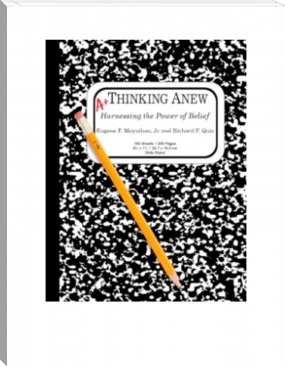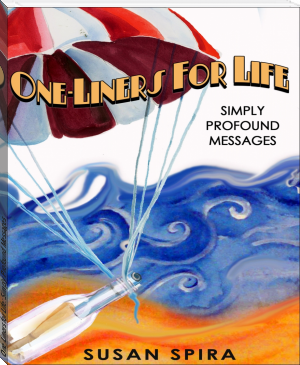mindset of a hero by Dr. Olusola Coker (best free ebook reader .txt) 📕

Read free book «mindset of a hero by Dr. Olusola Coker (best free ebook reader .txt) 📕» - read online or download for free at americanlibrarybooks.com
- Author: Dr. Olusola Coker
Read book online «mindset of a hero by Dr. Olusola Coker (best free ebook reader .txt) 📕». Author - Dr. Olusola Coker
Know history, stay up to date on current events, think critically, ask questions, and fall in love with reading
Invest in preparation and organization, plan ahead, use care, find and access resources, and seek for help and opinions with It-ness.
Work: learn to be self-motivated, to be diligent, to honor duty, to take satisfaction in a task well done, and to use measured effort to work smarter rather than harder.
Willpower: cultivate drive, determination, and dedication; anticipate challenges, missteps, and setbacks; and embrace the unknown.
Weathering Storms: Develop resiliency and the ability to bounce back from mistakes and poor luck.
Character Education: From Awareness to Action (hands-tree)
Students focus on how they can demonstrate similar heroic qualities after spending the school year discovering and debating the great traits of others. Students design an avatar (a graphic representation of non-visual concepts or ideas) for themselves, which they will refer to as their Super-Ordinary Hero.
Benefit-Mindset-We-in-Me
Each pupil chooses how to "bring to life" their hero. Students can create a poster, a giant doll, a pamphlet, a diorama, a mobile, a comic book, a film (live-action or animated), a multimedia presentation, and so on to portray their heroic self. Part of the joy is being original and creative.
Some of the components you can need your students to incorporate in their project are listed below. Please feel free to add to this list. Remind pupils that the hero they construct is a mix of who they are now and who they want to be in the future.
Nickname Heroic:
Every superhero requires a unique moniker, so students come up with one that encompasses all of the good they do for themselves and others. For their heroic moniker, students can employ alliteration.
My heroic moniker would be The Fascinating Philosopher since I appreciate sharing the knowledge I've gained with my pupils as well as learning about their discoveries and perspectives.
Motto:
Although we may not be able to leap big buildings in a single bound, an exciting rallying cry, slogan, or catchphrase highlights a hero's essential objectives or attributes in a single sentence. Students come up with a slogan that offers them direction and purpose in life.
"With a magnificent book in hand, the Fascinating Philosopher impacts the future by touching hearts and waking minds," would be my heroic motto.
sillohete superhero
Outfit:
Despite the fact that the goal is for kids to awaken the daily hero within them, every superhero requires a particular outfit or costume to show the world what they stand for. Students should design, dress, or outline their regal robes.
A cape created from reused pages of treasured books that have naturally fallen apart at the hands of scores of eager student readers would be an essential component of my heroic ensemble.
lightening-symbol
Symbol:
This visual expression of each student's heroism must encapsulate who each student aims to be, whether it is printed on their attire or decorated on their shield, cape, or helmet. Students must also give a brief description of their symbol.
An apple tree is my heroic emblem because it represents teaching, growth, deep roots, nature, and knowledge.
utility-belt
Gear:
As pupils choose their heroic accoutrements, please stress peace and positivity. Weapons and other destructive materials have no place in this project. Super-Ordinary Heroes are defenders of justice and champions of compassion who are more concerned with spreading goodwill and doing good actions than with fighting evil.
My hero's equipment would include a handkerchief to wipe away tears when something really poignant occurs in my classroom, reading glasses to reply to my students' outstanding work, and a wristwatch to keep track of the speed and flow of each interesting lesson.
invisible-jet
Vehicle:
Every hero has a preferred mode of transportation, preferably an environmentally responsible one. Students design a personalized license plate with up to eight characters or digits in addition to drawing or describing their car.
My hero's vehicle is my rolling desk chair, which allows me to move from student to student and interact with them on their level. EYE2EYE would be the license plate on my chair.
headquarters-superhero
Headquarters:
Students design a base of operations for their hero. Students must exhibit or describe the atmosphere that allows them to reflect, recharge, and recreate, whether it is their own bedroom or the home of their dreams.
My hero's base of operations is a dream classroom with huge, bright windows overlooking a flourishing student garden.
superpowers
Extraordinary abilities:
While certain features of these heroic identities are idealistic, they are also anchored in reality. Students choose their best three options from each of the four categories above using the heroic traits from the preceding list (added to by their own thoughts and those added to the classroom master list): Leadership, Love, Laughter, and Learning.
Allow students to have more than three heroic attributes in each category, but don't make them feel obligated to do everything. Every impact is significant—far more so than we may realize. Students must also describe why each characteristic is important to them individually and how they aim to demonstrate or implement it in the future.
influential-people
Actions that have an impact:
This is where students apply what they've learned in all of their subjects to recount the brave acts of people from history, science, mathematics, and other fields. Students should write at least four short narratives describing the loving, courageous behaviors of the persons they've been studying and admiring.
inspire-actions
Words of Advice:
Students use direct quotations from the words and writings of the people they have studied. These can be short quotes from the same persons whose impactful deeds were mentioned above, or they can be quotes from other people mentioned in this year's teachings.
achilles-heel
Kryptonite/Achilles Heel:
We all have flaws, weaknesses, and inconsistencies. It's critical to be aware of our flaws in order to avoid being our own worst enemy or unwittingly harming others. Students must self-reflect and honestly describe their three major flaws or temptations that get in the way of them being their best.
Unbalance is one of my Achilles' heels. They will progress as long as I pay equal attention to their social, emotional, spiritual, and academic requirements. I must also avoid giving up on any pupil, particularly if they have already given up on themselves. Furthermore, in a classroom, haste always leads to waste, and I must value process and development just as much as product.
There are many various types of mindsets, and how you deal with life's obstacles is largely determined by your attitude. A fixed and a development mentality are two primary mindsets that shape our lives.
A growth mindset is beneficial because it can assist you in overcoming hurdles that you may encounter when learning new things or gaining new skills.
People with a fixed mindset feel their attributes are fixed traits that cannot be changed. Rather of attempting to develop and improve their intelligence and talents, these folks document them.
Persistence and determination are important in a growth mindset. You can change the way you learn by changing the way you think.
What's the difference between having a fixed mindset and having a growth mindset?
"One easy way to convey the difference is that with a fixed attitude, you tend to assume "I failed due to a limitation of my talents," says Laura Schober, hero's Positive Psychology Coach. It's pointless to try again because I'm not very good at it.'
"Yet, you may believe with a growth mentality, 'I might have failed this time; however, I see it as an opportunity to learn, grow, and build extra resources.' So the next time I attempt, I'll be a little more successful!"
People that have a growth mentality are confident in their capacity to accomplish goals because they know that despite failures, they will eventually attain their objective.
Because of one's conviction in oneself and ability to learn and improve, this boosts self-esteem.
People with a fixed mindset, on the other hand, tend to shun more difficult jobs for fear of exposing their limitations.
This would result in negative effect and a negative impact on self-esteem, given self-esteem is based on successes in this scenario.
How do you cultivate a growth mindset?
One technique to cultivate a development mindset is to become acutely aware of one's own thoughts and beliefs, then rephrase them.
Laura suggests the following quick and easy practice to help you reframe your thoughts:
- Consider an incident that you regard as a negative or a setback.
- What went wrong? Who was involved in this? What effect did it have on you?
- Now consider the same experience and consider what you learned from it.
– As a result, did you create any personal resources? Which ones, if any, are you referring to? What did you learn from this experience? And how can you put this knowledge to use the next time you find yourself in a similar situation?
Increased self-esteem, resilience, and joy!
"Developing a development mentality, like anything else, requires time and effort," Laura adds. However, your efforts will be rewarded!
"People with a growth mindset have higher self-esteem and resilience, as well as being more optimistic, daring, and happy, according to research."
We're rediscovering that there's a part of us that yearns for heroic stories. Year after year, century after century, civilization after culture, we've continued to produce them. We're still making superhero movies now, as proven by the slew of superhero films released in the last decade.
But why do we do it in the first place? Sure, such fiction can be described as escapism. We can dismiss it as "an inability to confront reality" or a "fruitless yearning" to be in complete control of our surroundings.
But, please, don't be cynical.
The hero's journey isn't about escaping reality. Rather, heroic tales are supposed to both delight (and teach) our fickle human attention spans (remind us of our innate will to overcome obstacles and succeed). They're supposed to encourage us to aspire to the strength, intelligence, and toughness of the heroes we construct.
Finally, the hero's journey is a metaphor for one's own journey through life, not merely in the physical realm. It's also about the inward journey we must all take, a vital investigation of the soul with the objective of finding peace with ourselves and tapping into our inner strength.
Unfortunately, those who suffer from mental illness may find the trip within particularly difficult.
You're Afraid to Enter This Cave
I suffer from bipolar disorder. I, like many others with this disease, went through a dark period in my life where I was hurting others while also suffering myself.
While my thoughts and emotions spiraled out of control, I betrayed the trust of individuals I cared about the most, and I lost the capacity to enjoy life.
I eventually received assistance. I saw a number of therapists and psychiatrists in order to receive counseling and begin taking medicine. These were unquestionably crucial milestones on my road to wholeness.
However, I had the impression that something was lacking. I eventually recognized that I needed to do some work on my own. One significant step was finally taking a long, hard, and honest look at myself.
To put it another way, I needed to travel through my own head. Many of us are aware that a disordered mind may be a frightening place.
"The cave you fear to enter holds the riches you desire," Joe Campbell stated. Is there a more apt metaphor for a mind in the grips of uncontrollable mental disease than this? The insides of one's own mind can appear to be a gloomy, monster-infested underground lair.
But keep in mind the second element of Campbell's claim: there's riches in that dreadful cave. The "prize" in the case of mental illness is a healthier, more stable state.
If we develop the habit of being open and honest about mental illness, we will reap significant benefits. A personal hero's journey of self-discovery, in conjunction with standard therapy and medication, is crucial to the path to condition control.
The Never-Ending Journey
It's worth noting that I used the phrase "condition management."
Make no mistake: the road to recovery from mental illness is a long one. Many of us will be on this trip for the rest of our lives. For people who suffer from mental illness, however, it is a path that is quite possible. It takes a conscious decision to believe the path to a more stable mind is feasible,





Comments (0)